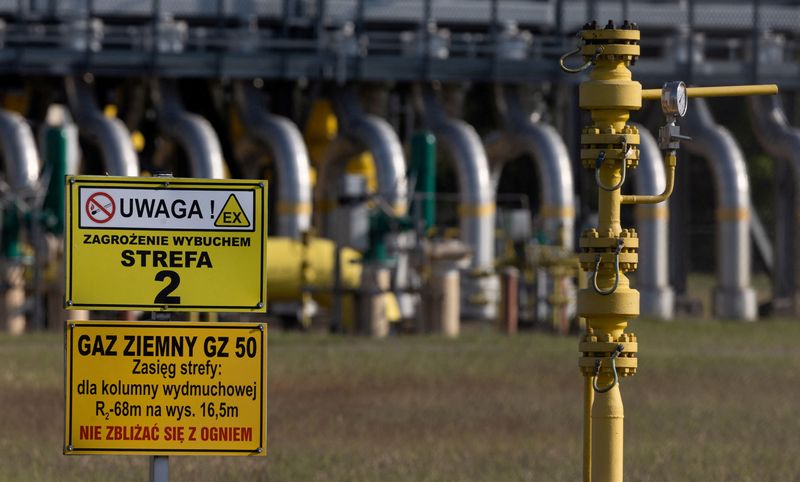How Europe will limit gas prices
2022.12.13 08:40

How Europe will limit gas prices
Budrigannews.com – Countries in the European Union have disagreed for months about how high a proposed cap on gas prices should be and whether the measure could hinder rather than assist Europe’s efforts to deal with an energy crisis.
After Russia stopped delivering the majority of gas to Europe following its invasion of Ukraine in February, the goal is to protect households and businesses in Europe from the kind of price increases that have occurred this year.
Europe’s energy costs have increased to levels not seen in decades, resulting in higher utility bills for consumers and the closure of some businesses.
However, the proposed gas price cap measure divides the EU’s 27 members. The latest attempt to reach an agreement takes place on Tuesday when energy ministers from countries meet.
What you need to know is as follows:
Around 15 EU nations have proposed a gas price cap for the entire continent in an effort to lessen the economic impact of rising gas prices.
Although they have decreased in recent months as a result of the EU’s agreement on some emergency measures, including obligations to fill gas storage, European gas prices remain relatively high.
On Wednesday, the European benchmark front-month contract on the Dutch Title Transfer Facility (TTF) gas hub was trading around 140 euros per megawatt hour (MWh).
That contrasts with approximately 14 euros/MWh two years ago and approximately 95 euros/MWh last year. In August, the price reached all-time highs of more than 340 euros per MWh.
On November 22, the European Commission made a proposal for a cap that would take effect if the front-month TTF contract was higher than a Liquefied Natural Gas (OTC:) contract by 58 euros for two weeks and exceeded 275 euros/MWh. LNG) reference price for ten trading days in a row.
Any trades that go above the cap level would not be accepted if these conditions are met. If the cap had negative effects, including threats to Europe’s gas supply, the Commission could immediately lift it.
Outside of energy exchanges, which the Commission stated were a safety valve for critical deliveries and were unlikely to take over any significant share of trade, it would have no effect on private gas trades.
The proposal from Brussels was widely criticized by EU nations, highlighting long-standing disagreements regarding whether or not to impose price caps at all.
Countries such as Belgium, Greece, Italy, Poland, and others that support a cap claim that the proposed level is too high and that the conditions under which the cap would be applied are so stringent that it will never be triggered. Others call the proposal a joke.
Countries in the EU are considering a revised version of the EU proposal that would make it easier to trigger and lower the cap to 200-220 eur/MWh and 35 eur/MWh above the LNG reference price. At that level, it would take three to five days, as opposed to the 10 days that were originally proposed.
However, price caps are opposed by Germany, the largest gas consumer in Europe, the Netherlands, and Denmark. They claim that if gas suppliers divert cargoes to regions where prices are higher than the EU’s capped level, capping prices will make it harder to attract fuel and disrupt the normal functioning of Europe’s energy market.
The Intercontinental Exchange (NYSE:), among others, which serves as the host for gas TTF trading has cautioned the Commission against implementing its proposal.
ICE stated in a memo that was sent to the Commission and seen by Reuters that the proposal could cause gas prices to rise because liquidity providers were likely to stop selling TTF gas futures if prices even got close to the cap level. As a result, prices would rise because there would be fewer sellers.
Last week, the European Central Bank stated that the EU proposal could jeopardize financial stability and could cause utilities to switch to private trading that is more risky in order to avoid the cap. The Association of European Energy Exchanges also expressed these concerns.
Last week, EU energy commissioner Kadri Simson met with energy exchange representatives to discuss their concerns. She stated that the EU proposal includes “strong safeguards” to prevent negative outcomes.
The price cap is intended to be a short-term solution that would take effect on January 1 for a year.
The Commission has asked EU energy regulators to establish a new LNG price benchmark by the end of March as a longer-term solution.
More Did Russia provoke energy crisis
The gas price at the TTF hub has historically served as a standard for LNG deliveries into Europe. The TTF price, on the other hand, has been extremely volatile and frequently more expensive than LNG prices in other regions due to the significant reduction in Russian gas supplies this year.
Brussels claims that a new index is required because Europe’s increased use of LNG this year to replace Russian pipeline gas means that the TTF is influenced by pipeline supply and no longer represents a market that includes more LNG.
The gas industry’s use of the benchmark would determine its success.








